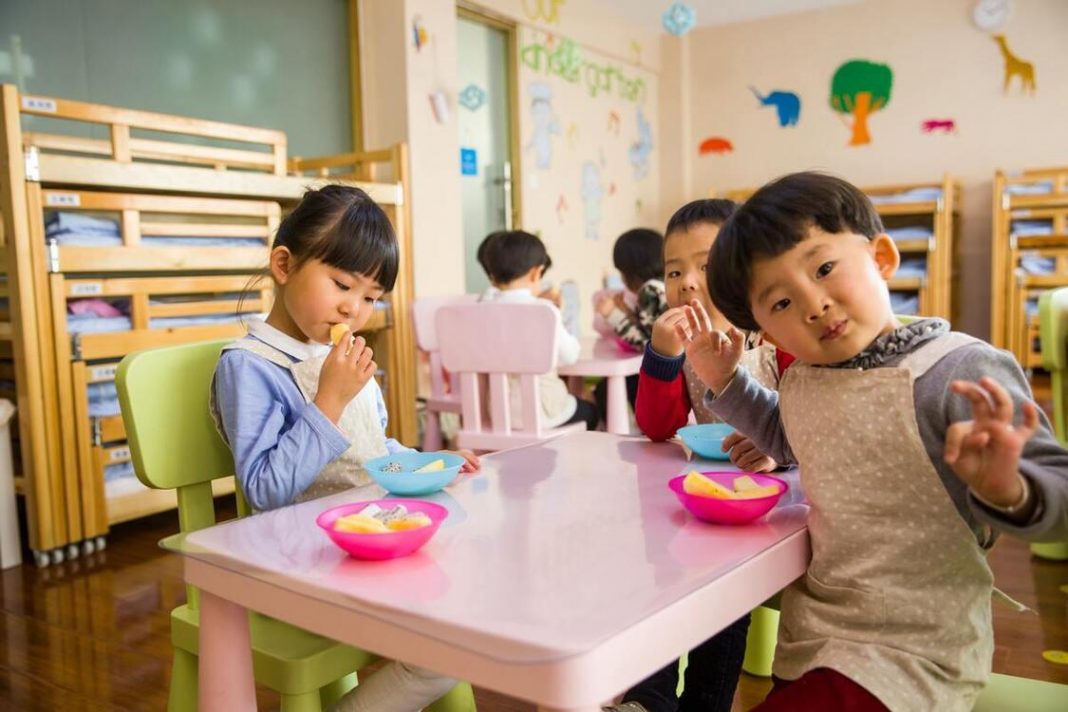With over-energetic preschoolers at home, parents often face the challenge of finding quick and easy indoor activities for kids to keep them entertained. While it is important for kids this age to have plenty of opportunities to run around and burn off energy, there are also rainy days or times when being cooped up inside is inevitable.
Math & ELA | PreK To Grade 5
Kids see fun.
You see real learning outcomes.
Watch your kids fall in love with math & reading through our scientifically designed curriculum.
Parents, try for free Teachers, use for free
And then, as responsible parents, we always want our children to learn something new every day too!
So here are 15 quick and easy indoor activities for 4 year olds that will help busy parents while also being fun and educational for the kids!
At-Home Learning Activities for 4 Year Olds
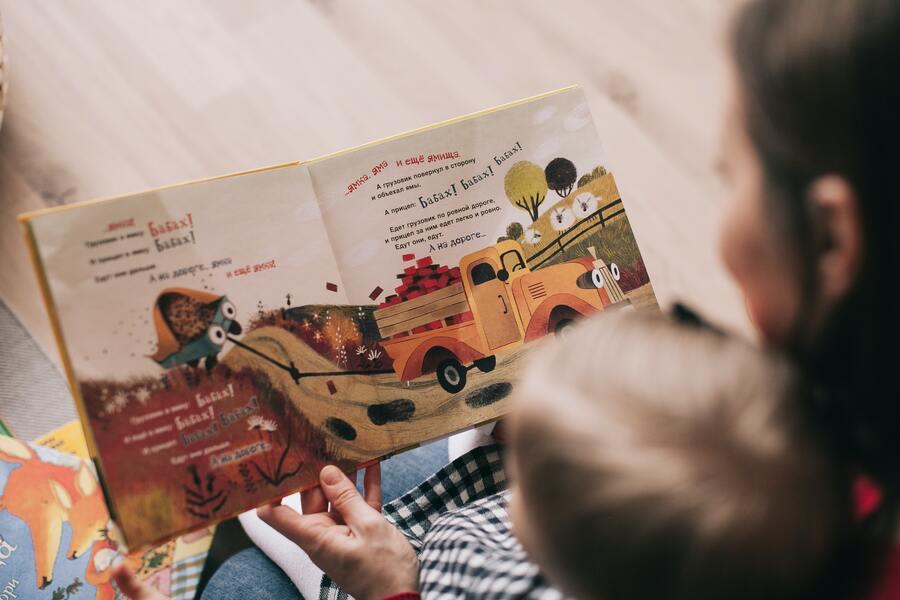
1. Read Books Together
What you’ll need:
- A small stack of your child’s favorite books
Instructions:
Sit down with your little one and spend some quality time reading together. As you read, point out new words and talk about the illustrations. Use different books to get your child excited in reading.
Some books suitable for preschoolers are picture books, pictionaries, pop-up books, books of rhymes, and even informative books about things your child is interested in.
Reading story books featuring your child’s favorite themes or watching videos of storytellers reading favorite traditional stories are also great ways to engage kids in reading.
Skills preschoolers will learn through this activity:
This activity is great for building literacy skills and fostering a love of reading in your child.
Related Reading: Reasons Why Reading is Important for Kids Development
2. Number Songs
What you’ll need:
- A device to play music (phone, tablet, computer)
- Access to number songs
Instructions:
Start by choosing a few popular number songs that are catchy and engaging for preschoolers. Play the chosen number song on your device, and encourage your child to sing along and perform the corresponding actions or dances for each song. Repeat the songs several times, and if possible, include visual aids like number flashcards to reinforce the numbers being sung.
Skills preschoolers will learn through this activity:
Singing number songs helps children recognize and remember numbers in a fun and engaging way, thus enhancing their counting and number recognition skills. Repeating songs improves their ability to memorize and recall sequences, aiding memory and recall development.
3. Get Coloring
What you’ll need:
- Crayons
- Coloring Pages or Blank Paper
Instructions:
Little kids usually love dinosaurs, fairies, pets, and soldiers!
Find some coloring pages online or a coloring book that features these themes, and let your child have at it! If you can’t find any, simply print out some blank paper and encourage your child to draw whatever he or she feels like. You can also help with drawing ideas for kids so that they could get comfortable.
When they’re finished, help your child cut out their masterpieces and display them proudly on the fridge or another spot in the house.
Skills preschoolers will learn through this activity:
This activity helps with fine motor skills, color recognition, and planning/execution. It also encourages your preschooler to observe and copy shapes from the world around them, and learn to express themselves through art activities.
4. Sensory Play with Gloop
What you’ll need:
- 2 cups of corn flour or cornstarch
- 1 cup of water
- Food dye
- A large container
Instructions:
Gloop is a fabulous sensory activity for kids!
To make it, simply mix together the corn flour and water, adding food dye to create any color you like. Then, let your child play with it! They will love feeling the gloop squish between their fingers.
Gloop can act like a solid as well as a liquid. As kids try to mold it, they can apply pressure to it to make a shape out of it, but when they leave it, it dribbles or slides down. This activity is as messy as toddlers like and is easy to clean and wipe off as you like!
Besides creative play and imagination, you can use this as a kids’ party game or activity where they can share their gloop and take turns, and hone their social emotional learning skills.
Skills preschoolers will learn through this activity:
One of the purest forms of exploratory learning, homemade gloop allows kids to use all their five senses. They hone their fine motor skills and coordination and get an opportunity to express themselves. You can use this as an opportunity to help your child love descriptive words like “squishy,” “slimy,” and “gooey”!
5. Play Educational Games Online
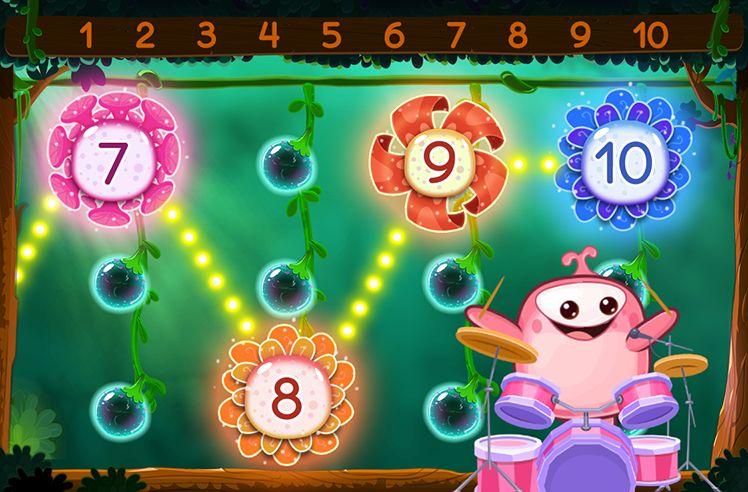
What you’ll need:
- A smartphone or laptop
- Internet connection
Instructions:
Many online learning games websites offer a variety of fun and educational games for kids of all ages, including preschoolers. They can be played anywhere, at any time, and don’t really need adult supervision.
They also offer personalized learning opportunities, fun rewards (mostly virtual), and actionable reports that help you direct your child’s learning. These websites are a great way to keep your little ones occupied and learning even when you’re busy.
Skills preschoolers will learn through this activity:
educational math games, reading games, ELA games, and science games can help kids learn a variety of academic concepts in a fun and interactive way. These games also help with problem-solving skills, memory, vocabulary, phonics, and more.
6. Bean Bag Target Toss
What you’ll need:
- A box of lightweight bean bags kids can easily toss
- Targets (such as laundry baskets, hula hoops, chalk circles, etc.
Instructions:
Set up targets around the room. While playing throwing games indoors, make sure there are no breakable items nearby.
Show your child how to toss the bean bag toward the target. They can stand close to the target at first and then move back as they get better. If playing with multiple children, take turns tossing the bean bags. The child who gets the most bean bags in the target wins the game!
Skills preschoolers will learn through this activity:
This activity helps with arm-torso coordination, gross motor skills, reading distances, and spatial awareness. It also promotes turn-taking and sportsmanship.
7. Camp Inside the Bedroom
What you’ll need:
- A toy tent or blankets and pillows to make the fort
- Healthy snacks and water
- Stuffed toys, binoculars, flashlights, and other things that can give kids a feeling of being in the jungle
Instructions:
On a bad weather day, you can bring adventure inside by setting up a campsite in your child’s bedroom. Make sure the fort is big enough for them to move around in and that there are no sharp objects or tripping hazards inside.
You can pack snacks and drinks in a small cooler and bring them into the fort. And don’t forget the stuffed animals! These can be used as ‘friends’ or ‘guardians’ while your child is camping inside.
Skills preschoolers will learn through this activity:
Being an independent jungle explorer (or a pretend forest officer!) is a great way for kids to build self-confidence. It also stokes their imagination as they look out for the animals in the jungle inside their room! It presents the right opportunity to teach your kids about the difference between domestic and wild animals when you do have time.
Art and Craft Activities for 4 Year Olds for a Rainy Day
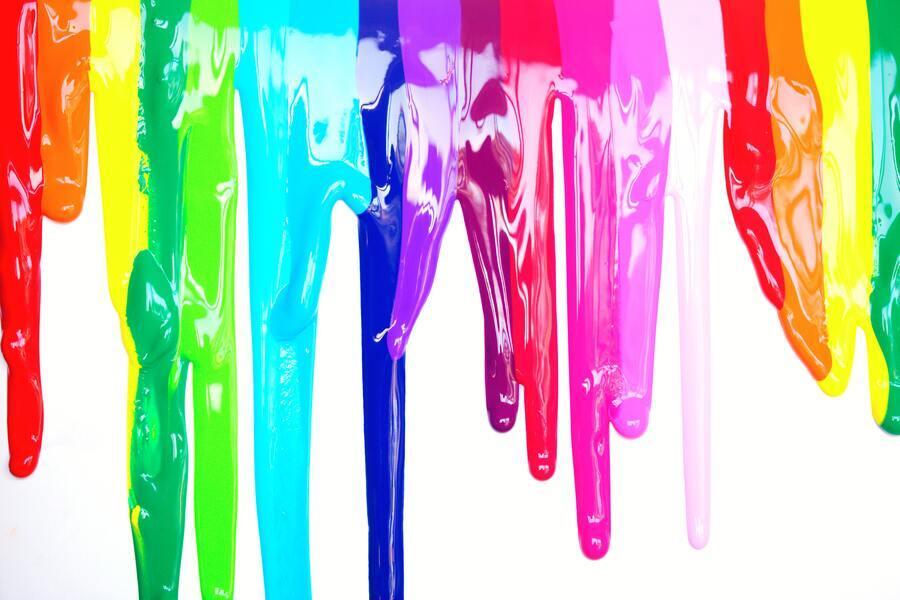
8. Homemade Puffy Paint
What you’ll need:
- A cup of flour
- 3 teaspoons of baking powder
- Different food colors
- 1 teaspoon of salt
- Water
- Snack-size Ziploc bags
- Rubber bands
- Paper
Instructions:
You can make the DIY puffy paint at home by mixing the flour, baking powder, and salt. Add enough water to make a thick solution that has the consistency of pancake batter.
Divide it into four parts and mix different colors into it. Put each color in a Ziploc bag and use a rubber band to turn it into an icing cone.
Snip off a tiny part of the corner and let your children use these icing cones to paint on paper. Once they are done, microwave the paper for 30-45 seconds, and viola! Their 3D puffed-up painting is ready.
Skills preschoolers will learn through this activity:
Puffy paints are a great way to engage all the senses while also encouraging creativity and self-expression. Plus, this activity helps kids learn about colors and how they can mix to create new shades.
9. Rainbow Bright
What you’ll need:
- Cornstarch
- Light corn syrup
- White vinegar
- Baking soda
- Gel food coloring
- Construction paper
Instructions:
Make child-safe watercolors at home by mixing cornstarch, light corn syrup, white vinegar, and baking soda.
Add a few drops of gel food coloring to each cup and give it a stir. Show your little ones how the colors mix and blend together to create new shades.
Then let them go crazy painting rainbow colors on construction paper!
These watercolors are far superior to store-bought ones as they are brighter, cheaper, and non-toxic.
Skills preschoolers will learn through this activity:
This activity helps with color recognition, mixing colors, and hand-eye coordination. It also encourages creative self-expression as kids can paint whatever they want. You may talk about ‘natural’ and ‘artificial’ colors while doing this activity.
10. Rainbow Leaf Prints
What you’ll need:
- Washable markers with fat, conical tips
- Tissue paper or scrap paper
- Different types of leaves (flat leaves are easier to work with)
- Cardstock or copy weight paper
Instructions:
Lay your leaf on scrap paper or tissue paper. Color it with washable markers. Make sure to use different colors and color heavily.
Now lay the colored tissue paper, leaf side down, on the cardstock or copy weight paper. Use your fingers to gently rub over the tissue paper so that the color is transferred onto the paper.
Carefully peel off the tissue paper to reveal your beautiful rainbow leaf print!
You can print one large leaf on paper or print multiple small leaves on paper. Just make sure that leaf prints do not overlap with each other as the colors may bleed.
Skills preschoolers will learn through this activity:
This activity is a great opportunity to teach your kids about different types of plants, what kinds of leaves they have and why, and how leaves change colors. It also helps with color recognition, learning about nature, and fine motor skills.
Related Reading: Kindness Activities for Kids to Develop Positive Values
Highly Creative Painting Activities for 4 year olds
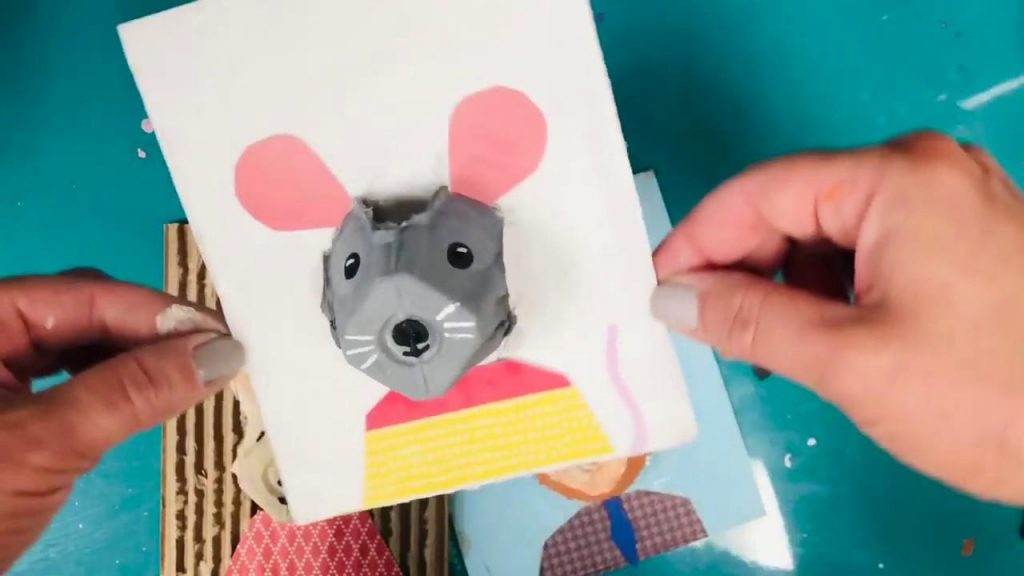
11. Construct Cute 3D Animals
What you’ll need:
- Cardboard egg carton
- Cardboard
- Paints and brushes
Instructions:
Cut the pointy section of the egg carton and glue it to the cardboard. Paint facial features (eyes, nose, ears, beak, etc.) on it and turn it into an animal or bird you like. You can make it a cow, dog, horse, unicorn, piglet, parrot, etc.
Tiny tots will need your help in cutting and gluing, but they can do the painting all by themselves. You can also use pipe cleaners, googly eyes, and other materials to decorate the animals.
Skills preschoolers will learn through this activity:
As kids fashion animals’ or birds’ faces from the raised part of the egg carton, they will have to use their imagination as well as observation skills. This will also help them understand how different animals look.
12. Create an Art Masterpiece Using Broken Crayons with Kids!
What you’ll need:
- Broken crayons of different colors
- Little glass jars
- Candle warmer
- Brushes
- Fabric or paper
- Dark-colored acrylic paint
Instructions:
Sort broken crayons by color. Put crayons of one color in one jar and melt them using the candle warmer (This bit should be done by the parent). Help children paint the paper or fabric using melted wax of different colors. Let it cool.
Paint the dark-colored acrylic paint onto the wax painting. The crayon art pops up with a lovely, raised effect!
Skills preschoolers will learn through this activity:
Using broken crayon bits to create artwork will introduce your young learners to the concept of recycling. The children also learn the basics of color mixing as they see how the colors blend when they are melted together.
13. Spinning Art
What you’ll need:
- A cheap salad spinner
- Some large white coffee filters
- Red, yellow and blue Tempera paints
Instructions:
An ideal STEAM activity for preschoolers, this art project requires you to put two coffee filters in the salad spinner and put a generous amount of your chosen paint color/s in their center.
*We need to put two filters as coffee filters are delicate. Doubling them up reduces the chance of them tearing up.
Place the lid on the salad spinner and give it a whirl to see how the colors spread through the coffee filters.
Skills preschoolers will learn through this activity:
Spin art is a perfect activity to teach your children the concept of primary colors (red, blue, and yellow) and secondary colors they can form by mixing them (such as green, orange, and purple). They can also learn about how different shades are formed, and how the centrifugal force works when things are spun!
Related Reading: Different Types of Graphic Organizers for Teachers and Students
Fun Activities for 4 Year Olds You Can Arrange Instantly

14. What’s Hiding in the Jelly?
What you’ll need:
- Edible jelly of different colors
- Small plastic containers of different shapes
- Plastic or wooden toys, numbers, letters, or blocks of different shapes
- A large tray
Instructions:
Prepare jelly cups and hide random toys, blocks, numbers, or letters inside them, and place them on a tray. Blindfold the kids and ask them to dig into a jelly cup, feel around, and guess what’s inside it.
If they fail to guess correctly, allow them to see what they will find inside it and help them identify it.
And then, let them lick their fingers and finish the jelly inside the cup!
Skills preschoolers will learn through this activity:
It’s a sensory activity where kids touch and feel while guessing. This develops their observation and deduction skills.
15. Ripping Paper
What you’ll need:
- Magazines and paper kids can rip up
- A large box to collect the scraps
- A broom and a dustpan to clean the mess
Instructions:
Destroying things is super-satisfying for little children. But asking them to throw the pages they rip up into the cardboard box can also be a game. Cleaning with a broom and a dustpan as if they are adults can also seem like pretend to play if done correctly.
Or you may want to keep the scraps and use them to make a collage later.
Skills preschoolers will learn through this activity:
This activity develops fine motor skills as kids rip up the paper. And cleaning up after themselves is helping them learn essential life skills they need to avoid roommate tiffs later in their lives.
16. Practice with Flashcards
What you’ll need:
- A set of picture or word flashcards
Instructions:
You can use store-bought flashcards or make your own. If you’re making your own, write down words or draw pictures related to a theme you’d like your child to learn about (e.g., animals, objects found in the kitchen, different vehicles, etc.) on separate pieces of paper or cardstock.
To play, hold up a card for your child to see and have them name the object or read the word aloud. If they get it right, give them a point or a sticker. The goal is to collect as many points or stickers as possible.
Skills preschoolers will learn through this activity:
Flashcards are excellent tools for teaching new vocabulary words and concepts. This activity will help your child learn to identify the objects or words on the cards, as well as improve their reading skills if you’re using word cards.
Related Reading: Best Group Games For Kids To Keep Them Entertained
Benefits of Educational Activities for 4 year olds

Education does not have to be dull. If you want to nurture your preschoolers into curious self-learners, then you should make educational activities fun and engaging. Here are some benefits of educational activities for preschool kids:
1. They learn to explore and be curious. Activities that stoke curiosity allows kids to explore their interests more deeply.
2. They develop problem-solving skills. When kids engage in educational activities, they learn how to break down a problem into smaller pieces and figure out a solution.
3. They cultivate their creativity. Being creative helps kids think outside the box and come up with original ideas.
4. They gain confidence in their abilities. Self-confidence gets nurtured when kids feel successful in their endeavors and get a lot of love and appreciation from their parents.
5. They learn to focus and concentrate. Trying to hit a target or solve a puzzle requires children to focus and concentrate on the task at hand, which is an essential skill for later in life.
6. They learn to persevere. Some activities may be challenging at first, but with a little bit of persistence, kids will eventually figure it out and feel proud of themselves.
7. They learn to cooperate and share. Many educational activities require kids to work together in teams, which teaches them the importance of cooperation and sharing.
Conclusion
These are just some of the benefits of educational activities for 4-year-olds. If you want to encourage your child’s love for learning, then make sure to incorporate some fun and educational activities into their daily routine.
Apart from being educational and beneficial for your child’s cognitive development, these activities are also a lot of fun! So go ahead and give them a try.
Frequently Asked Questions (FAQs)
How to keep kids busy and quiet indoors?
Preschool kids are full of energy and have an attention span of about 8 to 12 minutes. To keep them busy and quiet, you will need to find something that can keep them focused for at least 8 minutes. Searching for something or making up a game with rules are some ideas.
How can I make learning fun for my 4-year-old?
You can make learning fun by incorporating it into games and everyday activities. For example, you can teach your child the alphabet by singing the alphabet song while they are taking a bath. You can also count steps or stairs as you are going up or down.
How do you decide if an activity is good for preschoolers or not?
Any activity that’s fun and educational is good for preschoolers. However, you should also consider the attention span of your child and make sure that the activity is age-appropriate and safe.

















